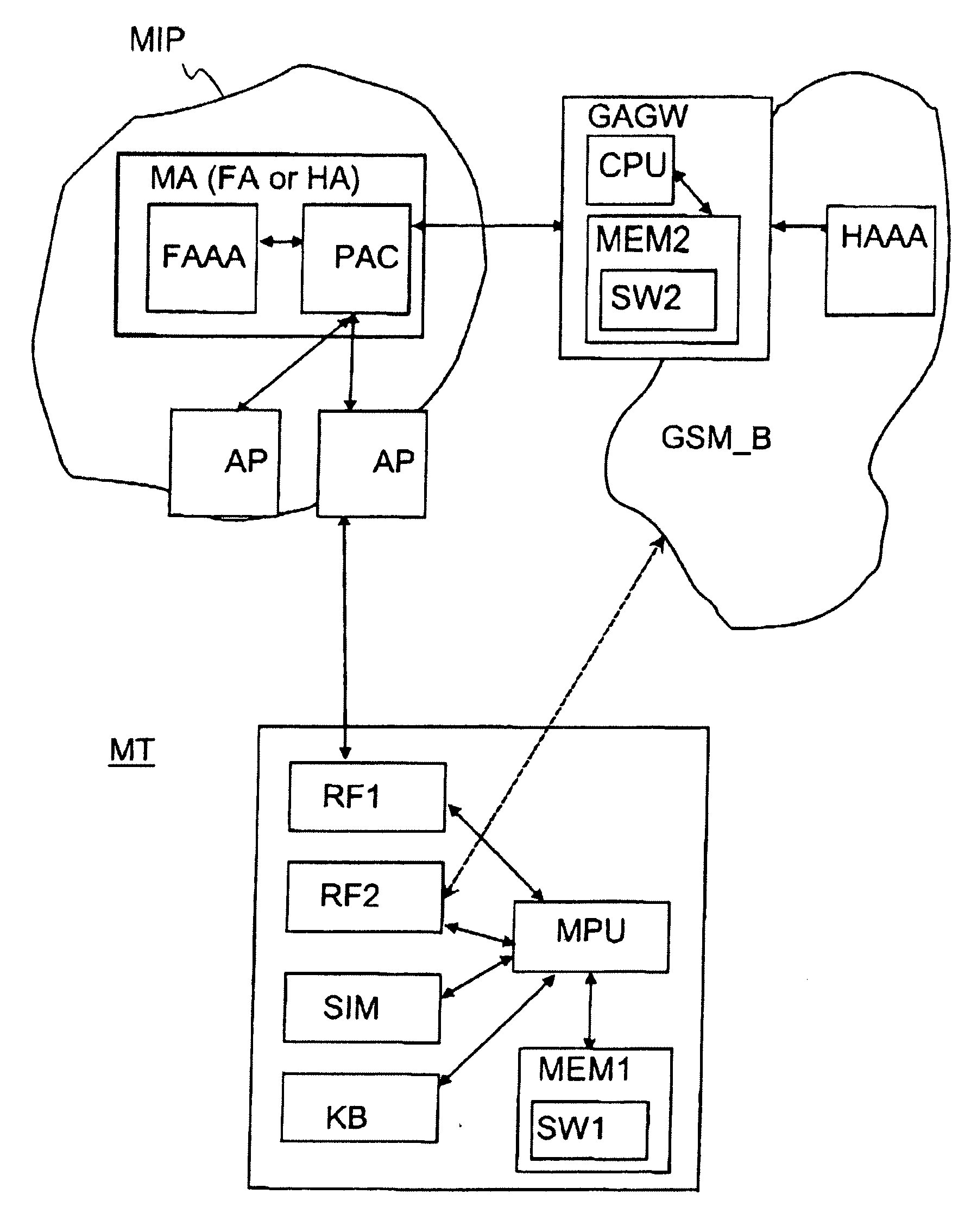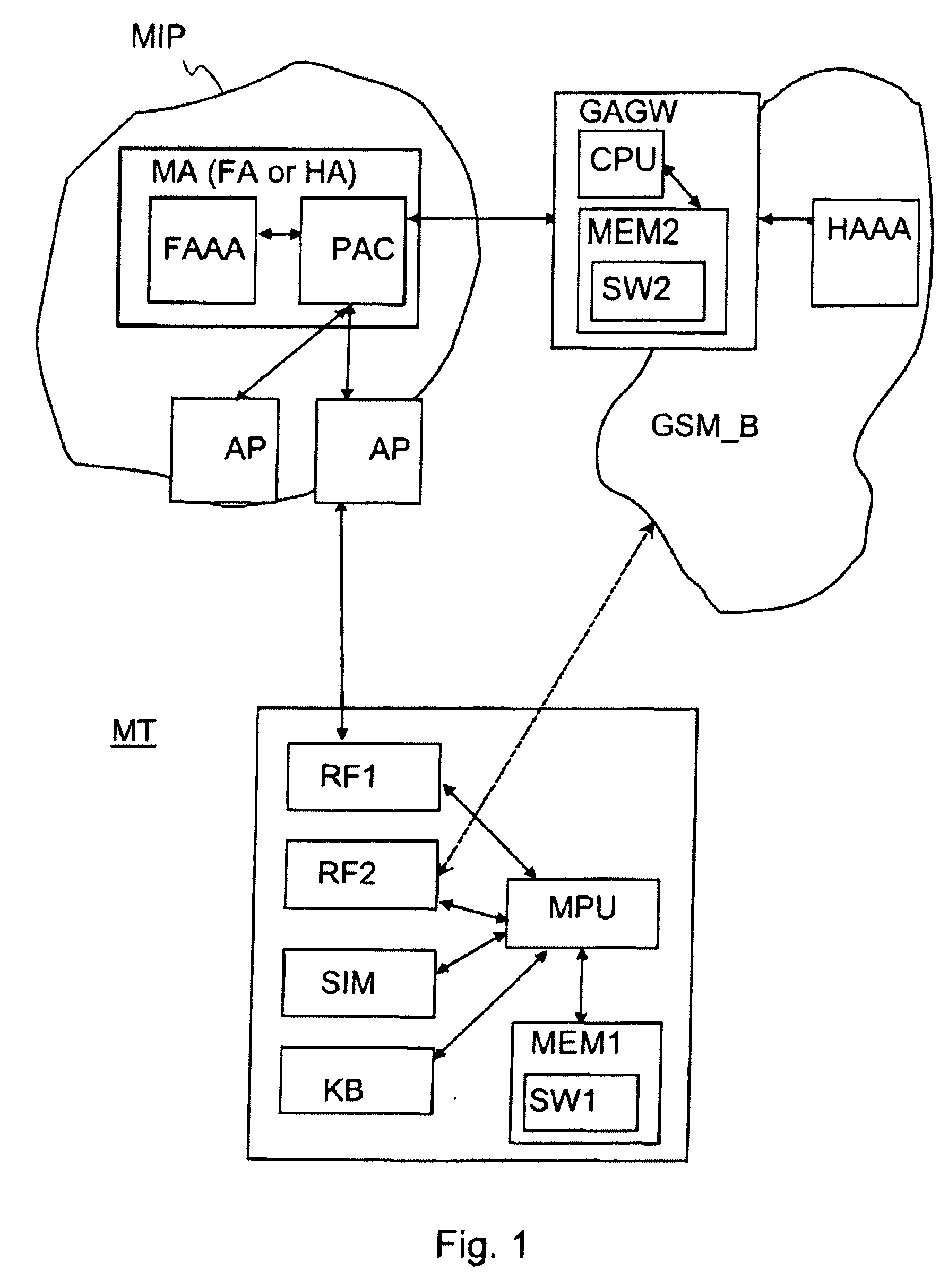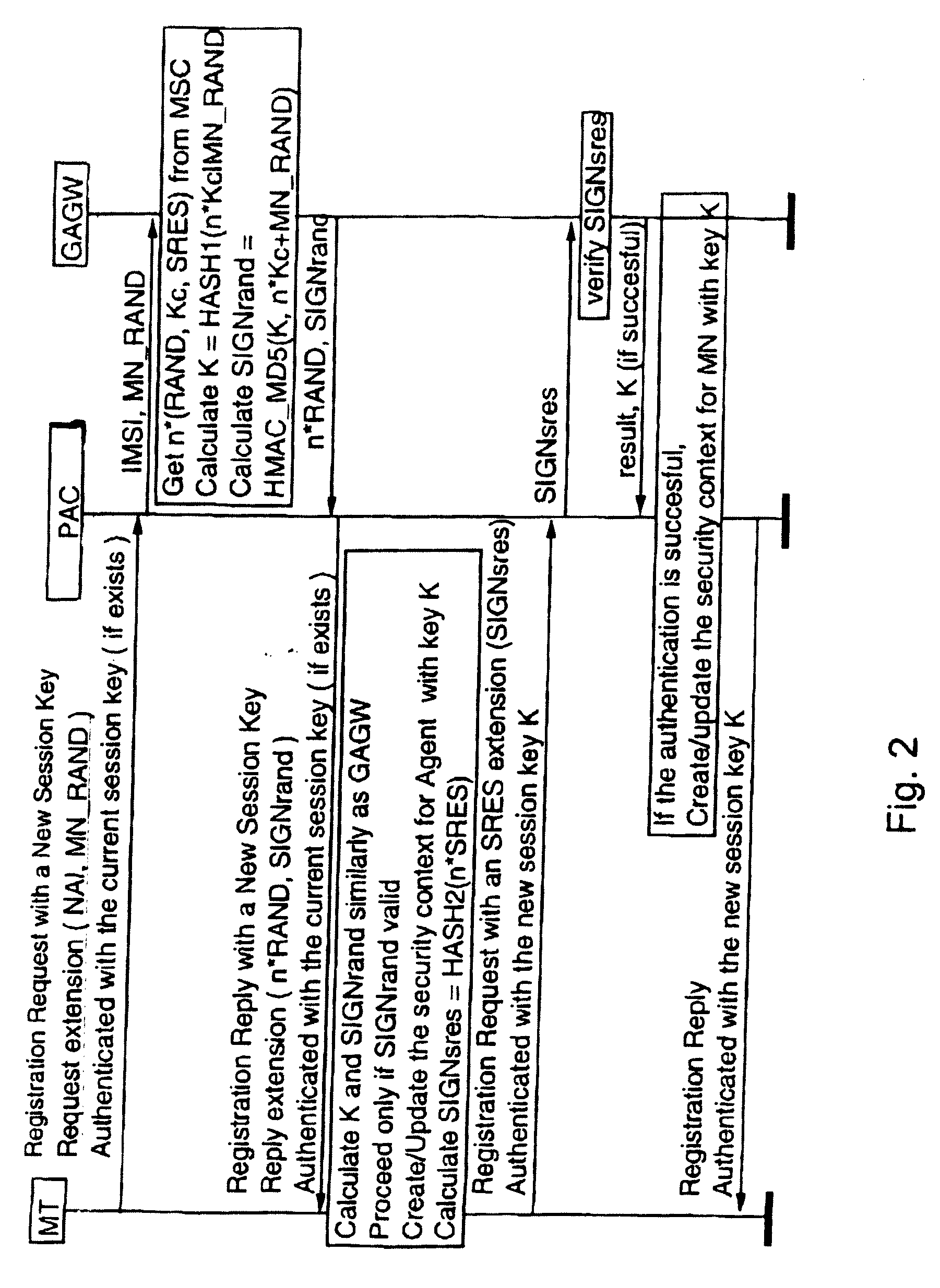Authentication in a packet data network
a packet data and authentication technology, applied in the field of mobile packet networks, can solve problems such as potential security risks, waste of data transmission bandwidth, and terminals not being able to determine whether the challenges are real or no
- Summary
- Abstract
- Description
- Claims
- Application Information
AI Technical Summary
Benefits of technology
Problems solved by technology
Method used
Image
Examples
example 1
Mobile IP
[0166] In the preferred embodiment of the invention, mobile nodes are identified by an International Mobile Subscriber Identity (IMSI) in the form of a string of digits. The IMSI is by definition a unique subscription identifier consisting of a national mobile subscriber identity and a mobile country code. For example, in the GSM, the IMSI is represented by bytes fewer than the number of digits in the IMSI.
[0167] The IMSI is transmitted in mobile IP messages as a Network Access Identifier (NAI). The NAI is in form of imsi@sonera.fi (for example “1234567@sonera.fi”) or imsi@gsm.org (for example “1234567@gsm.org”). Hence, the NAI carries an identity (for example as text or as an identifier number) of the mobile telecommunications network whose subscriber the mobile node is and an identification of the domain of the mobile node. This allows recognising the telecommunications network directly from the NAI.
[0168] The latter of those two examples of NAI, the gsm.org domain, is...
example 2
A Wireless LAN
[0266]FIG. 7 shows an architecture of a mobile communication system according to another embodiment of the invention. The system comprises a mobile node MT that is a data terminal, two public Wireless IP access networks (WISPs) WISP1 and WISP2, the Internet INET, a first GSM telecommunications network GSM_A and a second GSM telecommunications network GSM_B connected to a GSM core GSMCORE.
[0267] The public wireless IP access networks (WISP1,WISP2) offer wireless broadband IP services to allow the MT to roam in public hot spots, such as hot spots located, for example, to hotels and airports. Each WISP can be operated either by a GSM telecommunications network operator or by a private ISP with a roaming agreement with a GSM telecommunications network operator. The roaming agreement is essential for SIM authentication.
[0268] The MT functions as a mobile node. It can connect to a WISP. The MT can also roam from one network to another using a known technique. In WLAN, the...
example 3
[0348] The functional architecture of the present invention can be implemented using several suitable protocols. However, in this example an enhanced version of, an Internet Key Exchange (IKE, RFC 2409) protocol is used in communications between the MT and the PAC. Remote Authentication Dial In User Service (RADIUS, RFC 2138, RFC 2139) protocol is used for communications between the PAC and the GAGW. It should also be noted the PAC functionality could be integrated inside an access point server if needed. However, by separating the PAC functionality from the access point, handovers are easier to implement and hence the separation is appropriate for installations comprising a plurality of access points. FIG. 14 shows the main signalling between the MT, the PAC and the GAGW when the enhanced IKE protocol referred to as IKE+ is used between the MT and the PAC.
[0349] HDR is an Internet Security Association and Key Management Protocol (ISAKMP, RFC 2409) header whose exchange type define...
PUM
 Login to View More
Login to View More Abstract
Description
Claims
Application Information
 Login to View More
Login to View More - R&D
- Intellectual Property
- Life Sciences
- Materials
- Tech Scout
- Unparalleled Data Quality
- Higher Quality Content
- 60% Fewer Hallucinations
Browse by: Latest US Patents, China's latest patents, Technical Efficacy Thesaurus, Application Domain, Technology Topic, Popular Technical Reports.
© 2025 PatSnap. All rights reserved.Legal|Privacy policy|Modern Slavery Act Transparency Statement|Sitemap|About US| Contact US: help@patsnap.com



